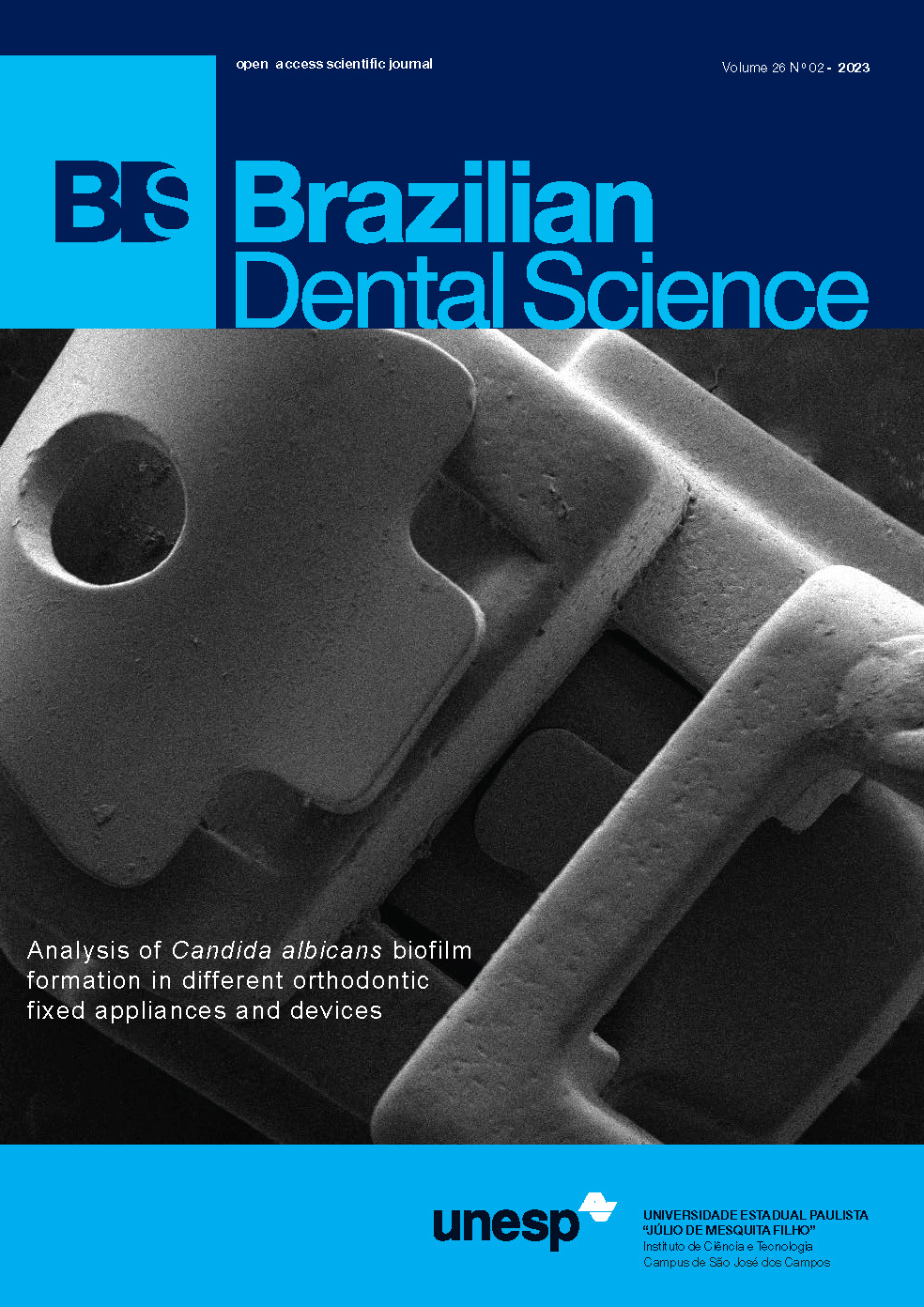Comparison of obturation quality, instrumentation time and post-operative pain using manual K-files and pediatric rotary files in primary molars – a double blinded randomised clinical trial
DOI:
https://doi.org/10.4322/bds.2023.e3497Resumo
Objective: to compare the quality of obturation, instrumentation time and post-operative pain after pulpectomy in primary molars using manual K-files, Kedo-S and Kedo-S Square rotary file systems. Material and Methods: a double blinded randomized control trial was conducted in 45 children, who were indicated for pulpectomy in any one of the primary mandibular molars. The canal preparation was done using either hand K-files, Kedo-S files, or Kedo-S Square files based on the groups assigned. The time taken for instrumentation was recorded using a stopwatch. The quality of obturation was evaluated using post-operative radiograph and post-operative pain was assessed with modified Wong-Baker Faces Pain scale. Results: instrumentation time was minimum in rotary Kedo-S Square files (53.23 ± 9.60 seconds) followed by Kedo-S files (82.70 ± 11.86 seconds). The preparation time was maximum with manual K-files (121.43 ± 20.18 seconds). Kedo-S square files provided a higher number of optimally filled canals (66.4%). All the three instrumentations equally showed the tendency to produce voids in the obturation. Rotary files Kedo-S Square followed by Kedo-S showed less post-operative pain compared to K-files. Conclusion: the use of pediatric rotary instruments for canal preparation during pulpectomy will result in better quality of obturation in reduced time with least post-operative pain.
KEYWORDS
Children; Hand files; Instrumentation; Pulpectomy; Rotary files.
Downloads
Downloads
Publicado
Como Citar
Edição
Seção
Licença
TRANSFERÊNCIA DE DIREITOS AUTORAIS E DECLARAÇÃO DE RESPONSABILIDADE
Toda a propriedade de direitos autorais do artigo "____________________________________________________________________" é transferido do autor(es) para a CIÊNCIA ODONTOLÓGICA BRASILEIRA, no caso do trabalho ser publicado. O artigo não foi publicado em outro lugar e não foi submetido simultaneamente para publicação em outra revista.
Vimos por meio deste, atestar que trabalho é original e não apresenta dados manipulados, fraude ou plágio. Fizemos contribuição científica significativa para o estudo e estamos cientes dos dados apresentados e de acordo com a versão final do artigo. Assumimos total responsabilidade pelos aspectos éticos do estudo.
Este texto deve ser impresso e assinado por todos os autores. A versão digitalizada deverá ser apresentada como arquivo suplementar durante o processo de submissão.




























